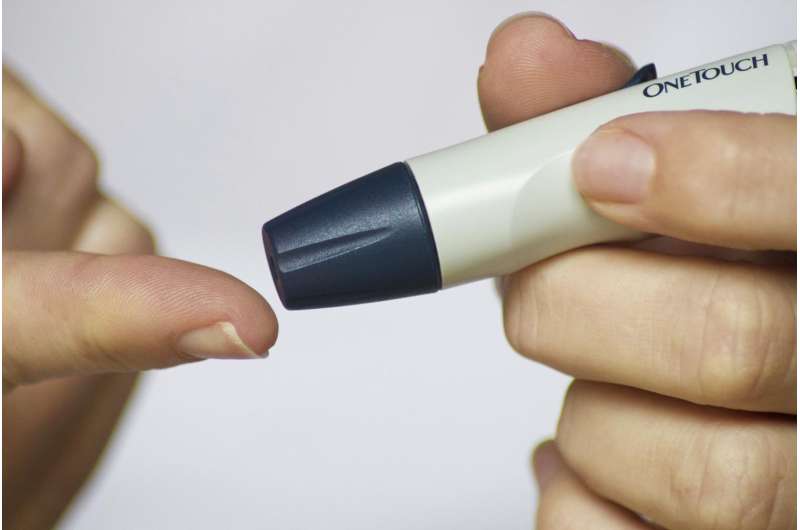Credit: CC0 Public Domain
A new modelling study presented at this year's Annual Meeting of the European Association for the Study of Diabetes (EASD), held online this year, suggests that the average person with type 1 diabetes (T1DM) in the UK today will live almost eight years less than the average person in the general population without diabetes, while those with type 2 diabetes (T2DM) will live almost 2 years less. The study is by modelling expert Mike Stedman, Res Consortium, Andover, UK, and Dr. Adrian Heald, University of Manchester, UK, and colleagues.
For their analysis, the authors used various data. The UK National Diabetes Audit (NDA) published, for 2015-16, the all-cause standardised mortality ratio for people with T1DM and T2DM, along with information on their age and sex. The Office for National Statistics (ONS) published for 2015-17 actual mortality rates of the general population for each age year and sex.
In their model, the authors applied relative NDA mortality rates to population rates for each age/sex, and then calculated the future life expectancy for T1DM/T2DM/non-DM populations. The difference between total life expectancy for the total reported populations by age and gender of T1DM and T2DM and an equivalent population with non-DM gave the total 'lost life years' (LLY).
The researchers took data from 6,165 general practices supporting 41.3m people of whom 217,000 were on T1DM register and 2.50 million on T2DM register. In the model the 'average' person with T1DM (age 42.8 years) has a life expectancy of 32.6 years (living to 75.4 years), compared to 40.2 years (living to 83.0 years) in the equivalent age non-diabetic population, corresponding to a mean LLY of 7.6 for the average person with T1DM.
The model showed the 'average' person with T2DM (age 65.4 years) has a life expectancy of 18.6 years (living to 84.0 years) compared to the 20.3 years (living to 85.7 years) for the equivalent non-diabetic population, corresponding to LLY of 1.7 years/average person with T2DM.
Compared with the average LLY for men, the average LLY/person were 21% higher for women with T1DM and 45% higher for women with T2DM.
The authors also add that the NDA reports that 70% of patients with T1DM and 33% of patients with T2DM had a glycated haemoglobin (HbA1c) (a measure of blood sugar control) higher than 58mmol/mol, so were at higher risk of poor outcomes. By allocating total LLY to the future life expectancy of both T1DM and T2DM at-risk group, the model shows that each year that a person with either type of diabetes spends with HbA1c>58mmol/mol could shorten their life by 100 days. The authors say: "Knowledge of this may act as an incentive for clinicians to ensure that all people are on the best therapy to keep their blood sugar in the target range, and for those people to engage more strongly with their therapy and lifestyle recommendations."
The authors mention some limitations to their study, namely that is used national-level mortality data and not general practitioner practice-level data. Also, it is likely that other factors contribute such as smoking, inactivity, overweight, hypertension and taking of statins. These will be the subject of a future full analysis with general practice-level data. However, the authors say it is likely that the HbA1c level will remain a strong independent determinant of mortality.
They conclude: "Linking poor glycaemic control to expected mortality in such a quantitative way may incentivise clinicians and people with diabetes and poor blood sugar control to increase their efforts to achieve targets. Communication of life years lost from now to patients at the time of consultation with healthcare professionals and through messages publicised by advocacy groups such as Diabetes UK and other national/international patient facing organisations will be of great help in terms of dissemination of the conclusions of this study. More work is required to understand why women are losing more life years than men."
Provided by Diabetologia























